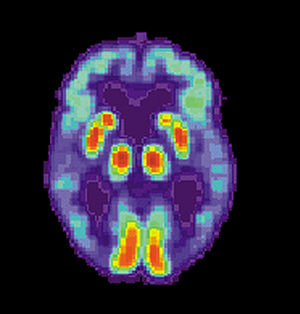 Image via Wikipedia
Image via Wikipedia
It was long thought that the formation of plaques injured and perhaps even caused the death of nerve cells in the brain. Recent studies, however, suggest that a form of the amyloid beta protein that is soluble rather than the form that is deposited in plaques mediates most of the destructive impact of this protein.
In a new study published in Biological Psychiatry, by Elsevier, researchers have related the findings that are emerging from PET-PIB imaging to changes in the function of brain circuits. Sheline and colleagues examined Alzheimer's disease patients and cognitively normal, healthy individuals who were then divided into those with or without brain amyloid plaques.
Using functional connectivity brain mapping, they found that amyloid plaques are present in the brains of people with Alzheimer's disease as well as some healthy elderly people who do not show behavioral evidence of Alzheimer's disease. However, they found that the healthy participants with brain amyloid deposits were associated with compromise of the connections between important brain regions involved in learning and memory even though their memory functions were not markedly impaired. Similar disruptions in brain connections were found in individuals with Alzheimer's disease.
Continue Reading
![Reblog this post [with Zemanta]](http://img.zemanta.com/reblog_b.png?x-id=883083a1-cef5-437a-982d-f2ab0eaf2778)
No comments:
Post a Comment